Complete this sentence: If you want better answers, you have to…
I imagine your answer is the same as every leader in my coaching skills leadership development programs:
…ask better questions!
That’s close.
After the last 16+ years training professional coaches, and now training leaders to integrate coaching skills into their everyday work conversations, I’ve realized that this statement needs to be modified to:
If you want better answers, you have to CRAFT better questions.
We all know how to ask questions. We’ve been asking questions since we started talking. But too often the questions that pop into our heads and come out of our mouths are not all that great, and might ultimately be counterproductive or even outright destructive. And these random, poorly thought out questions waste a lot of everyone’s time, money, and energy.
It’s important for leaders, managers, and supervisors to know how to intentionally and strategically craft powerful questions that both build positive relationships with their team members and focus on tangible results. This is the heart of facilitating efficient and productiveCoaching Conversations*. Lucky for you, knowing how to put words together in a specific and deliberate way to get the desired outcome is a learnable skill that can be practiced and mastered over time.
(* The dual intent of a Coaching Conversation is to (1) create a positive, collaborative connection, and (2) efficiently move the conversation through a concise and focused exploration that leads to a specific plan of action and accountability.)
A great place to begin this new learning process is to add some basic coaching-style questions to your leadership toolbox that you can pull out as needed and tailor to different situations. Here are ten of my favorite “toolbox” coaching questions, along with what makes them so powerful. Not all of them will be appropriate in all situations, and you will likely adjust the wording a bit to fit your own communication style or team’s culture. But this is a solid place to begin.
(To customize the question, fill in the “…” with the specifics of the particular situation.)
1. If you could design the perfect outcome for …, what would that look like?
This is a “begin with the end in mind” (Stephen Covey) question and gives your team member permission to let their creativity come out and explore. It also tells them you value their opinion, perspective, and expertise. The results may look different in the end, but it gives you both a place to start the exploration and move towards a resolution.
2. How will you know when you’re successful with …?
I love this toolbox question because it asks your team member to project forward to the point of success and start creating evaluative parameters up front so they can track their progress. This is a lot better than staying stuck in re-hashing the past, which is a gaping black hole where nothing will ever get created, other than frustration.
3. What else is possible when you make … happen?
This question helps your team member connect the dots between a particular solution and the bigger picture, rather than looking at a situation or challenge in a vacuum — because everything is connected at work. It also helps them anticipate the possible ripple effects of solving a particular challenge.
4. What CAN you do with the time/resources/budget you DO have?
This is my favorite toolbox question to ask a client who gets stuck in “I can’t” and feels mired in an either/or dilemma: they have to either do everything or nothing. When a team member is feeling restricted by time, resources, or budget, this will help them shift their focus out of the mental dead end and into possibility thinking.
5. What will it take to …?
This is one of my all-time favorite toolbox coaching questions. It both assumes success and kicks the problem-solving brain into high gear. Even if a team member’s initial answer is “I don’t know,” trust that their brain is getting engaged. Some options for completing this are:
What will it take to …
… move forward?
… turn this around?
… make this right?
… leverage this so it becomes a benefit?
… do what you need/want to do?
… make this a reality?
6. What has to be in place in order to …?
This is another strong strategy-focused and creativity-engaging question. You’re asking a team member to anticipate the foundational needs to ensure success, and to begin putting all the pieces together in their mind.
7. What can you do about this situation right now?
This question brings your team member’s focus back to the here-and-now. It’s important to balance creating and tracking the vision of success with what has to happen today in order to reach that vision; it’s gets them thinking about the next doable step.
8. On a scale from 0-10 (or 0-100%), how committed are you to …?
I love quantifying commitment for a few reasons. Although I’m sure you want to assume that your team members are fully committed to their work, the team, the project, the company, and the customers, asking them outright in certain situations can set the stage for accountability. If they say “10” (or “100%”), it’s been stated out loud, which makes it more compelling to live up to. This question can also open the path for growth. If you’ve built a trusting relationship where they know they can be honest with you, and it’s less than a 10, this opens the door to more coaching, mentoring, or training to figure out how to move them towards a 10.
9. How will this action help you move forward toward …?
This question creates continuity from one action or plan to the next, all building toward the final goal. And once an action step or plan has been identified, this question will also help your team member identify the relevance of their action — WHY doing it matters. This relevance is critical to sustaining employee engagement, motivation, and enthusiasm.
10. How does this action/plan help the team/company reach its vision & goals?
Another important facet of relevance and employee engagement is making sure your team members can connect the dots between their own work and your organization’s larger vision, mission and goals. Nothing will sink the ship faster than team members feeling that what they do all day has no meaning in the big picture.
BONUS Toolbox Question: When will you do this?
All the Coaching Conversations in the world won’t move your team member forward without identifying when something will be done – then doing it. Attaching a day and time to the action resulting from a Coaching Conversation with give both you and your team member clear accountability.
Author Laurie Cameron is a senior faculty member at Coach Training Alliance, and is a Certified CTA Coach. She is also a Master Certified Opposite Strengths® Executive Coach, a Master Certified Relationship Coach with Relationship Coaching Institute, and a Certified Master Mind Facilitator. Learn more about Laurie: www.wakeupenterprises.com









